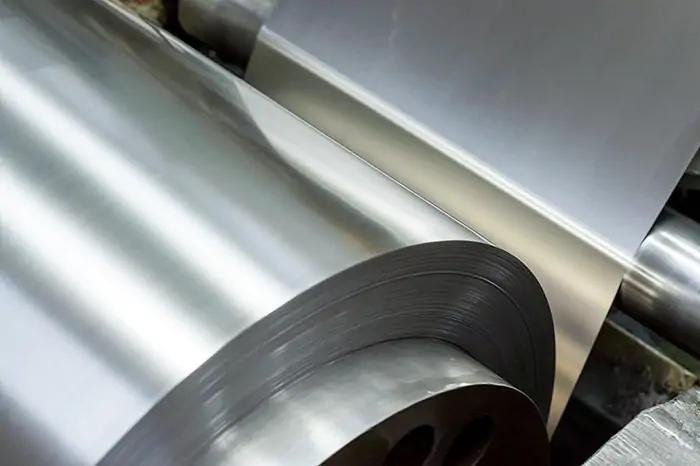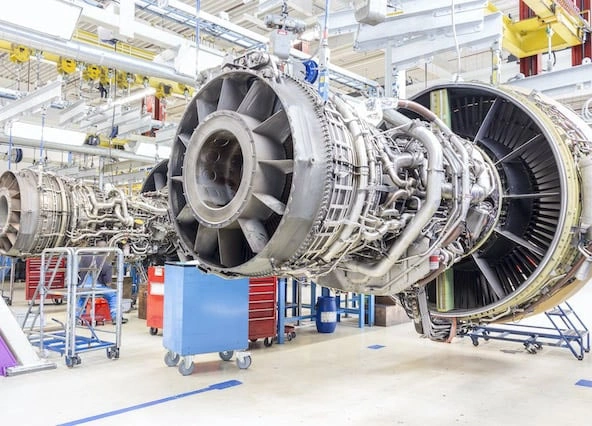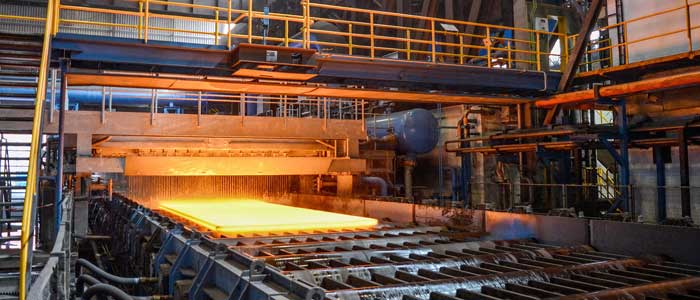In recent years, the field of material science has witnessed significant advancements, especially in the area of soft magnetic composite materials. These materials are pivotal in various applications, including transformers, electric motors, and other electromagnetic devices. By enhancing the magnetic properties, we can boost the performance and efficiency of these technologies. The development of these materials has not only improved the functionality of current devices but also paved the way for innovations in the field of electronics and electrical engineering.
The growing demand for energy-efficient solutions has further accelerated research in soft magnetic composites. Industries are constantly seeking materials that can perform under challenging conditions while minimizing energy consumption. This drive for efficiency is not only beneficial for economic reasons but also essential for reducing the environmental impact associated with energy production and consumption. Consequently, advancements in soft magnetic composite materials are integral to achieving more sustainable technological solutions.
Soft magnetic composite (SMC) materials are made from ferromagnetic powders mixed with an insulating binder. This unique composition gives them distinct advantages over traditional magnetic materials, particularly in reducing energy losses and improving performance. The combination of magnetic and non-magnetic materials results in composites that can be easily manufactured into complex shapes, providing versatility in design and application.
The innovation in SMCs lies in their ability to balance magnetic properties with mechanical strength. By carefully selecting and combining different types of ferromagnetic powders and binders, researchers can tailor the properties of SMCs to meet specific application needs. This customization ensures that devices using SMCs can achieve optimal performance, reducing the need for additional components and lowering overall system costs.
Soft magnetic materials are characterized by their ability to be easily magnetized and demagnetized. They have low coercivity and high permeability, making them ideal for applications where rapid changes in magnetization are required. These properties are crucial for reducing energy loss in electromagnetic devices. Low coercivity ensures that the material can switch its magnetic state with minimal energy, while high permeability allows for effective magnetic flux conduction.
The ease of magnetization and demagnetization in these materials also enables faster response times in devices, which is particularly beneficial in applications requiring rapid switching, such as inverters and power converters. The continuous improvement of these properties is a focal point of research, as it directly correlates with the efficiency and reliability of electromagnetic devices, ultimately leading to better performance and longer operational life.
- Reduced Energy Losses: By minimizing eddy current losses, SMCs enhance the overall efficiency of electrical devices. Eddy currents, induced by changing magnetic fields, can lead to significant energy dissipation in the form of heat. SMCs help in mitigating these losses by incorporating insulating binders that reduce the path of eddy currents, thus conserving energy.
- High Permeability: This allows for better magnetic flux, which is beneficial in improving the performance of transformers and motors. High-permeability materials enable more efficient magnetic coupling, increasing the effectiveness of electromagnetic devices. This results in devices that operate more smoothly and with less energy consumption, critical for high-performance applications.
- Versatility: SMCs can be molded into complex shapes, providing design flexibility for engineers. This flexibility is particularly useful in miniaturizing components and integrating them into compact devices, a growing trend in modern electronics where space is at a premium. The ability to customize shapes without compromising performance is a significant advantage over traditional materials.
- Reduced Weight: These materials are lighter than traditional metallic cores, which can lead to weight savings in applications like electric vehicles. The reduction in weight contributes to improved fuel efficiency and performance in automotive applications, as well as in other sectors where mobility and energy efficiency are crucial. Lighter components also reduce the stress on mechanical systems, leading to longer lifespan and reduced maintenance costs.
The unique properties of soft magnetic composites make them ideal for various applications. Below, we explore some of the key areas where these materials are making a significant impact. As industries strive to enhance performance while reducing energy consumption, the role of SMCs becomes increasingly vital.
The application of SMCs extends beyond traditional uses, finding their place in innovative technologies that demand higher efficiency and sustainability. Their ability to reduce energy losses and improve performance has led to widespread adoption in several high-tech industries, each utilizing these materials to address specific challenges and improve overall device functionality.
Transformers and inductors are essential components in electrical grids and electronic devices. The use of soft magnetic materials in transformer core materials allows for more efficient energy transfer and reduced power losses. In transformers, SMCs help in minimizing core losses, which are a significant source of inefficiency in power distribution systems.
Moreover, advancements in SMC technology enable the production of transformers that can operate at higher frequencies, which is crucial for modern power electronic systems. Inductors benefit similarly from SMCs, as the enhanced magnetic properties allow for smaller, lighter components without compromising performance, facilitating the development of compact and efficient power systems.
Electric motors are at the heart of modern automation and transportation. The development of high-performance materials, like SMCs, enables motors to operate more efficiently, with less heat generation and lower energy consumption. The high permeability and low coercivity of SMCs allow for more efficient magnetic field interactions, resulting in improved motor performance.
SMCs also allow for innovative motor designs, such as axial flux motors, which are compact and highly efficient. This innovation is particularly relevant in the automotive industry, where there is a continuous push for electric vehicles to become more powerful and efficient. The use of SMCs in electric motors contributes to reduced energy consumption, increased range, and improved overall vehicle performance.
In the realm of electronics, electromagnetic composites are used to enhance the performance of various components. The ability to tailor the magnetic properties of these composites makes them suitable for a wide range of electronic applications. SMCs are used in sensors, inductors, and other components that require precise magnetic properties for optimal operation.
The integration of SMCs in electronic components enables devices to operate at higher efficiencies, reducing power consumption and heat generation. This is particularly important in consumer electronics, where energy efficiency and thermal management are critical for device longevity and user satisfaction. The continuous advancement in SMC technology promises even more efficient electronic components in the future.
The advancement in soft magnetic composite technology is driven by the need for more efficient and sustainable materials. Here are some of the latest developments in the field. The ongoing research and development efforts aim to push the boundaries of what these materials can achieve, focusing on enhancing their properties while addressing the challenges associated with their production and application.
As the demand for energy-efficient and environmentally friendly solutions grows, researchers are exploring novel approaches to improve the performance and sustainability of SMCs. These developments are crucial for meeting the needs of modern technology, where efficiency and sustainability are top priorities.
Researchers are continually working to enhance the magnetic properties of composite magnets. By optimizing the composition and manufacturing processes, new SMCs exhibit improved magnetic performance. Advances in material processing techniques, such as powder metallurgy and additive manufacturing, allow for precise control over the microstructure of SMCs, leading to superior magnetic properties.
Efforts are also being made to develop new alloys and binder materials that can further enhance the magnetic characteristics of SMCs. These innovations have the potential to significantly reduce energy losses and increase the efficiency of devices, making them more competitive with traditional magnetic materials.
Nanotechnology has opened new avenues in material science. The incorporation of nanoparticles into soft magnetic materials can lead to composites with superior magnetic properties and reduced energy losses. Nanocomposites offer the ability to manipulate magnetic properties at the nanoscale, resulting in materials that are more responsive to magnetic fields and exhibit lower eddy current losses.
The use of nanoparticles also allows for the development of SMCs with enhanced mechanical properties, such as increased strength and durability. This is particularly beneficial for applications where materials are subjected to extreme conditions, ensuring long-term reliability and performance.
As sustainability becomes a priority, the production processes of soft magnetic composites are being refined to reduce environmental impact. This includes using eco-friendly binders and reducing waste during manufacturing. Efforts are being made to develop biodegradable binders and recycling processes for SMCs, minimizing the environmental footprint of their production and disposal.
Additionally, advancements in manufacturing techniques, such as 3D printing and laser sintering, enable more efficient use of materials and energy, reducing waste and emissions. These environmentally friendly practices are essential for aligning SMC production with global sustainability goals and ensuring their widespread adoption across industries.
Despite the numerous advantages, there are challenges in the widespread adoption of soft magnetic composite materials. Here are some of the hurdles and potential future directions. Addressing these challenges is essential for unlocking the full potential of SMCs and ensuring their successful integration into a wide range of applications.
The future of SMC technology depends on overcoming these obstacles and leveraging the opportunities they present. Continued research and innovation will play a crucial role in addressing the limitations of current materials and processes, paving the way for more efficient and sustainable solutions.
Producing high-performance SMCs can be cost-intensive, which limits their use to high-value applications. Developing cost-effective manufacturing techniques will be crucial for broader adoption. The high cost of raw materials, along with the complexity of production processes, contributes to the overall expense of SMCs, making it challenging for industries to implement them on a large scale.
Efforts to reduce costs focus on optimizing production processes and identifying alternative materials that offer similar performance at a lower cost. Innovations in automation and material processing technologies are also being explored to increase scalability and reduce production expenses, making SMCs more accessible to a wider range of industries.
Ensuring that soft magnetic materials maintain their properties under varying temperatures is vital. Future research may focus on enhancing the thermal stability of these materials. Thermal fluctuations can impact the magnetic properties of SMCs, leading to reduced performance and reliability, particularly in high-temperature applications.
Researchers are exploring new material compositions and manufacturing techniques to improve the thermal stability of SMCs. By enhancing their resistance to temperature changes, SMCs can be used in a broader range of applications, including those that require high-temperature operation, such as aerospace and automotive industries.
The ability to tailor soft magnetic materials for specific applications is both an opportunity and a challenge. Advances in material science must continue to allow for precise customization of these composites. Customization requires a deep understanding of the relationship between material composition, microstructure, and performance, necessitating sophisticated modeling and simulation tools.
As industries demand materials with specific properties for unique applications, the ability to rapidly prototype and test new SMC formulations becomes increasingly important. Continued advancements in computational material science and experimental techniques will be key to achieving this level of customization, enabling SMCs to meet the diverse needs of modern technology.
Soft magnetic composite materials represent a significant leap forward in the field of material science. With their unique properties and wide range of applications, they offer promising solutions for improving the efficiency and performance of electromagnetic devices. As research continues, we can expect further advancements that will make these materials even more integral to our technological landscape.
In summary, the future of soft magnetic materials looks bright, with ongoing innovations paving the way for more sustainable and efficient applications across various industries. As these technologies evolve, they will undoubtedly play a crucial role in shaping the future of material science and engineering. By overcoming current challenges and capitalizing on new opportunities, soft magnetic composites are poised to become a cornerstone of next-generation technological advancements, driving progress in energy efficiency and sustainability.







